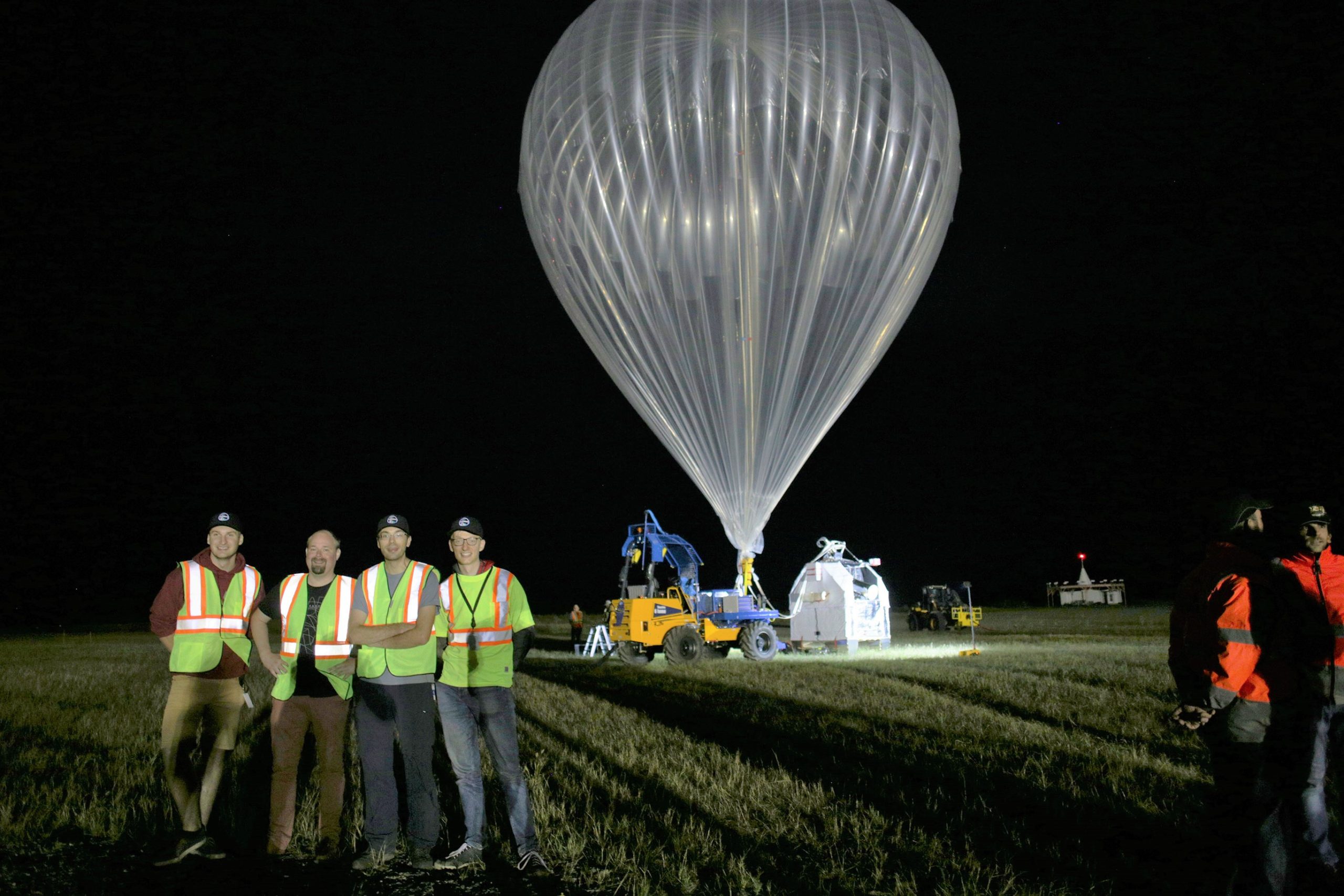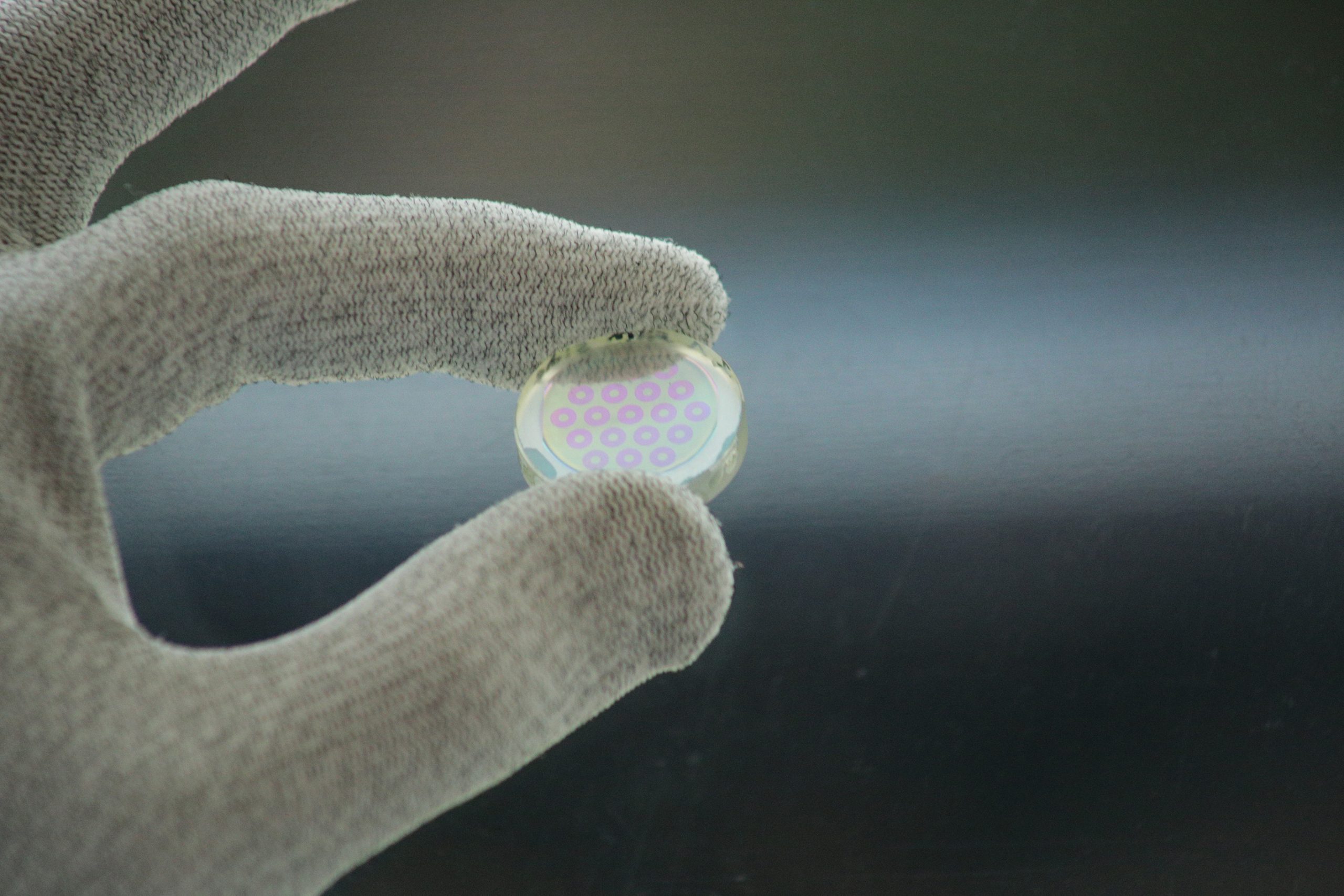In de nacht van 25 op 26 augustus is in het Canadese Timmins een ballon gelanceerd naar 37 kilometer hoogte met aan boord Nederlandse technologie om in de toekomst exoplaneten direct in beeld te krijgen. De zogeheten coronagraaf maakt deel uit van het sterrenkundige HiCIBaS-instrument. De testmissie had een lanceervenster van drie weken en kon aan het einde van deze periode eindelijk vliegen, na aanhoudende harde wind.

Drie Nederlandse promovendi hebben samen met de Leidse sterrenkundige Frans Snik de technologie in de afgelopen zes maanden ontwikkeld. “Het is net een avonturenroman,” laat Snik uit Canada weten. “De hele wereld is bezig met het ontwikkelen van zulke technologie voor toekomstige ruimtetelescopen, en wij zijn met een groep jonge wetenschappers eventjes de eersten die het in de ruimte testen.”
De nieuwe technologie is ontwikkeld door de Universiteit Leiden en ruimteonderzoeksinstituut SRON om exoplaneten in beeld te kunnen krijgen. Met deze missie hebben wetenschappers de techniek nu voor het eerst op zo’n grote hoogte getest dat de aardatmosfeer geen hindernis vormt, zodat de test vergelijkbaar is met een ruimtemissie.
Coronagraaf
HiCIBaS staat voor High Contrast Imaging Balloon System en is gebouwd door een groep Canadese studenten van de Université Laval in Quebec City. Het instrument combineert nieuwe technieken die fel sterlicht wegfilteren, zodat astronomen exoplaneten kunnen waarnemen vlak naast een ster die duizenden tot miljarden keren feller is. Het Nederlandse team leverde een zogenoemde ‘vector-APP’-coronagraaf met bijbehorende algoritmes. Een conventionele coronagraaf blokkeert sterlicht simpelweg met een zwarte schijf, maar het extreme contrast van bijvoorbeeld aardachtige exoplaneten met hun moederster vereist geavanceerdere methodes.
Daarom ontwikkelt de onderzoeksgroep van Snik coronagrafen die het licht in de halo rondom een ster wegsluizen met behulp van vloeibare-kristaltechnologie die oorspronkelijk ontwikkeld is voor beeldschermen. De groep is al druk bezig om de meeste grote telescopen op aarde uit te rusten met deze techniek, zoals Magellan, Subaru, de LBT en de VLT. Nu heeft het team van de Universiteit Leiden en SRON dit soort geavanceerde coronagrafen als eerste groep ter wereld ook in een ruimtevaartmissie werkend gekregen. HiCIBaS ondervond tijdens de vlucht technische problemen bij het richten op sterren, maar dit werd opgelost met behulp van een laser. De testvlucht liet meteen zien dat de coronagraaf in een extreme omgeving presteert zoals ontworpen.
Toekomstige ruimtetelescopen
Op aarde worden nu enorme telescopen gebouwd met spiegels van tientallen meters in doorsnee. Zulke grote telescopen hebben een hoog scheidend vermogen en een hoge gevoeligheid, maar het fonkelen van sterren door turbulentie in de aardatmosfeer limiteert het contrast voor directe waarnemingen aan exoplaneten. In de ruimte is het lastig om hetzelfde scheidend vermogen en dezelfde gevoeligheid te halen omdat grote telescopen gewoonweg niet in een raket passen, maar het is juist makkelijker om een hoger contrast te halen. Snik: “Het zeer uitdagende doel is om uiteindelijk een contrast te halen van één op meer dan een miljard met toekomstige ruimtemissies. Met onze test zetten we de eerste belangrijke stappen in die richting. We vinden in de praktijk uit wat nu eigenlijk de moeilijkheden zijn. De komende maanden zullen we onze data in detail analyseren. En wanneer ons instrument weer teruggebracht wordt vanuit het bos op 180 kilometer afstand waar het geland is, kunnen we ook onze optische componenten inspecteren.”
Samenwerking
HiCIBaS is een tussenstap op weg naar een ruimtetelescoop waaraan zowel de Universiteit Leiden als SRON kunnen bijdragen met nieuwe technologieën op het gebied van optica, zeer gevoelige detectoren en complexe regeltechniek. Henk Hoevers (SRON): “In de toekomst willen we de atmosfeer van een exoplaneet bestuderen die op de aarde lijkt; dat is echt heel moeilijk en dan moet alles in ons instrument kloppen. De gecombineerde technische kennis die we nu in Leiden en bij SRON ontwikkelen is daarvoor essentieel.”
Headerfoto
Het Nederlandse HiCIBaS-team voor de gondel met daarin de telescoop en het instrument. V.l.n.r. Steven Bos (Universiteit Leiden), Frans Snik (Universiteit Leiden), Chris de Jonge (SRON) en David Doelman (Universiteit Leiden). De ballon verbonden aan de gondel is slechts een hulpballon voor de lancering. De hoofdballon is zo’n tien keer groter.

Foto van de vector-APP-coronagraaf die als onderdeel van het HiCIBaS-instrument naar 37 km hoogte gelanceerd is. Op het glasplaatje zijn patronen van vloeibare kristallen te zien, die zodanig ontworpen zijn dat ze sterlicht lokaal uitdoven zodat vlak naast een ster een afbeelding van een exoplaneet gemaakt kan worden.
Contact Sterrewacht Leiden / NOVA: Frans Snik (snik@strw.leidenuniv.nl) Contact SRON: Henk Hoevers (H.F.C.Hoevers@sron.nl)
————————————————————————————————————————-
————————————————————————————————————————-
Dutch technology for direct exoplanet observation tested in space
On the evening of August 25th in Timmins (Canada), a balloon was launched to 37 km altitude with on board Dutch technology for future direct imaging of exoplanets. The so-called coronagraph is part of the HiCIBaS instrument. The test mission had a three-week launch window and finally received the go-ahead at the end of this period, after ongoing strong winds.

Three Dutch PhD students, together with Leiden astronomer Frans Snik, have developed the technology in the past six months. “It’s like an adventure novel,” Snik reports from Canada. “The whole world is working on developing such technology for future space telescopes, and we are the first to test it in space with a group of young scientists.”
The new technology was developed by Leiden University and space research institute SRON to eventually visually capture exoplanets. With this mission, scientists have now tested the technology for the first time at a high enough altitude such that the Earth’s atmosphere doesn’t form an obstacle. This makes the test comparable to a space mission.
Coronagraph
HiCIBaS stands for High Contrast Imaging Balloon System and is built by Canadian students from the Université Laval in Quebec City. The instrument combines new technologies that filter out bright starlight, allowing astronomers to observe exoplanets right next to a star that is brighter thousands to billions of times. The Dutch team provided a so-called ‘vector APP’ coronagraph including corresponding algorithms. A conventional coronagraph simply uses a black disk to block starlight, but the extreme contrast of e.g. rocky exoplanets against their parent star requires more advanced methods.
For that reason, Snik’s research group is developing coronographs that channel away the light from a star’s halo using liquid-crystal technology which was originally developed for tv screens. The group is already equipping most of the large telescopes on Earth with this technique, such as Magellan, Subaru, the LBT and the VLT. Now the team from Leiden University and SRON are the first to put a functioning version of this kind of advanced coronagraph on a space mission. HiCIBaS experienced technical problems during the flight when focusing on stars, but this was solved by using a laser. The test flight immediately showed that the coronagraph performs as designed in an extreme environment.
Future space telescopes
On Earth, enormous telescopes are currently being built with mirrors tens of meters in diameter. Such large telescopes have a high resolution and sensitivity, but turbulence in the Earth’s atmosphere makes stars sparkle, thereby limiting the contrast for direct observations of exoplanets. In space it is difficult to achieve the same resolution and sensitivity, because large telescopes simply don’t fit into a rocket, but it is actually easier to get a higher contrast. Snik: “The very challenging goal is to eventually achieve a contrast of one in over a billion with future space missions. Our test is the first important step in that direction. We find out what exactly the practical difficulties are. Over the coming months we will analyze our data in detail. And when our instrument is brought back from the forest, 180 kilometers away where it landed, we can also inspect our optical components.”
Collaboration
HiCIBaS is a step towards a space telescope to which both Leiden University and SRON can contribute with new technologies in the field of optics, highly sensitive detectors and complex control technology. Henk Hoevers (SRON): “In the future we want to study the atmosphere of an exoplanet that resembles the Earth. That is genuinely very difficult; every part of our instrument needs to be perfect. The combined technical knowledge that we now develop in Leiden and at SRON is essential for this.”
Header image
The Dutch HiCIBaS team in front of the gondola with the telescope and the instrument. From left to right: Steven Bos (Leiden University), Frans Snik (Leiden University), Chris de Jonge (SRON) and David Doelman (Leiden University). The balloon attached to the gondola is only a secondary balloon for the launch. The main balloon is about ten times bigger.

Photograph of the vector APP coronagraph that was launched to 37 km altitude as part of the HiCIBaS instrument. The glass slide shows patterns of liquid crystals that are designed to quench starlight locally so that an image of an exoplanet can be made right next to a star.
Contact Leiden Observatory / NOVA: Frans Snik (snik@strw.leidenuniv.nl) Contact SRON: Henk Hoevers (H.F.C.Hoevers@sron.nl)


